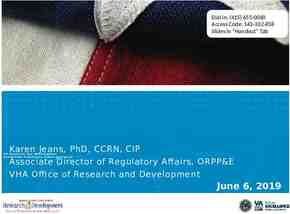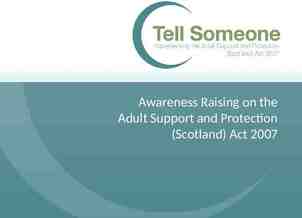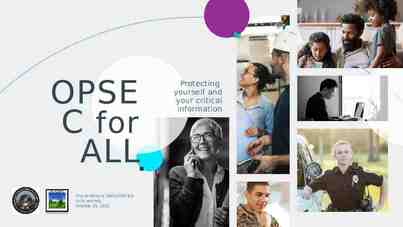Trail Coordinator A Network Initiative John Kurtz Outdoor Recreation
9 Slides334.74 KB
Trail Coordinator A Network Initiative John Kurtz Outdoor Recreation Planner Shoshone, Idaho Field Office Bureau of Land Management 9/15/2010
Trail Coordinator Evolution Worked with local volunteer trail group for several years to address demand for trail opportunities on BLM, USFS and private lands. Volunteer trail group disbanded but there was still a need for coordination and outreach. Established an Assistance Agreement with Blaine County Recreation District (BCRD) to establish a paid/formal trail coordinator position.
Trail Coordinator Managing by Network Network Goal / Vision The network initiative goal is to have coordination amongst all agencies and recreation providers to address and provide trail based recreation opportunities in the Wood River Valley. Network Objectives Over the next 2 years establish a seamless trail information/education source(s) and outreach regarding trail conditions, user ethics, visitor expectations and multiple-use management. The network will consist of BLM, USFS Ketchum Ranger District and the Sun Valley Company. Over the next 5 years monitor and maintain designated trails on BLM lands and establish connections to those trails/trailheads from population centers.
Formal and Informal Network Partnerships Partners with Volunteer Agreements Potential Adopt-a-Trail program Partners With Assistance Agreements Blaine County Recreation District Idaho Rangeland Resource Commission (Multiple-use management education) Partners Under Contract None yet. Partners With MOU Establish an MOU between BLM, USFS, BCRD and any other significant stakeholder Intra/Inter Agency Partners USFS Ketchum Ranger District Informal Partnerships Local mountain bike shops Woodside Motor Sports Backcountry Horsemen Potential Partners Sun Valley Company Cities of Sun Valley, Ketchum, Hailey and Bellevue Wood River Bicycle Coalition Wood River Land Trust Blaine County Commissioners
Stage of Network Development What’s the status of your network development:? Visioning Conceptual Research and Development Implementation Planning Active Evaluating What are you doing at this stage to manage the network and move to the next stage? Establishing additional funding sources (USFS RAC Grant) Obligating Take-it-Outside funds (Programming) Designing website Maintaining/shaping new trails and trail features Designing new trail segments
Network Geography Communities of Place, Identify and Interest Where does your network operate? Wood River Valley and Magic Valley, Idaho Who benefits from the development of your network? BLM and Forest Service Recreation District Sun Valley Company World Mountain Bike Championships
Benefits of the Network Present 1. Assistance with trail design and maintenance 2. Outreach and education through blogs (http://woodriverbike.wordpress.com/) Future Economic Benefits Local businesses Personal Benefits Improved physical fitness Decreased stress Sense of appreciation Environmental Benefits Natural resources (respecting trail closures) Increased awareness and protection of landscapes (open space) Community Benefits Ranchers (reduce conflicts and raise awareness of BLMs multiple-use mandate) Private property owners (trespassing) Heightened sense of satisfaction with the community Increased desirability as a place to live or retire School kids get a chance to experience nature (Take-it-Outside)
Evaluating Network Potential and Performance Evaluation Criteria Comments 1 Advance strategic priorities of the agency Take-it-Outside program, Outreach and education, Provide recreation opportunities and address travel management issues. 2 Leverages funding USFS RAC grant, BLM Recreation Fee program (1232), Recreation District grants, USFS trail crew assistance 3 Demonstrates big-picture thinking Address recreation opportunities from a users and stakeholders perspective. 4 Demonstrates entrepreneurship Capitalizes on each agencies strengths 5 Management of formal agreements and contracts Assistance Agreement with Blaine County Recreation District 6 Demonstrates effective external and internal communication Formalizes communication between users , land managers, and recreation providers. Internally documents how recreation issues are being addressed and provided. 7 Demonstrates accountability Accountability addressed in the Assistance Agreement and will be extrapolated in future MOUs. 8 Potential as a network management model Many integral parts to the success of this program, focuses primarily on what needs to be done and next on who best to accomplish each task.
Lessons Learned About Network Management List two to three lessons learned about network management that your wish to share with colleagues within your agency It takes a lot of time to establish and manage by network but the long term benefits are worth the investment. Understanding stakeholder perspectives are necessary to achieve success. List one to two lessons learned about network management that changed the way you interact with partners Always ask your partners what are their interests, goals and objectives.














